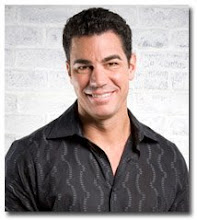Tea – How to Brew Tea
How to brew tea? What could be more important than preparing a fine cup of tea the right way? You've spent the time to find and the money to buy a good product. It should be prepared as it, and you, deserve.
Most don't have time for a Japanese tea ceremony. A full ritual, with food and drink, can take up to five hours. So, for those with less time, but the desire for a good brew, here are some tips.
According to MyNutritionStore.com, the first thing to examine in how to brew tea is the water you use. Even the finest leaf can yield a less than stellar cup if the water is wrong.
It can be too heavily chlorinated, or full of minerals, or 'stale'. Yes, water can get stale, in the sense that - since it absorbs odors from the air - it can contain chemicals that lessen the quality of your cup of brewed tea.
Water can contain heavy concentrations of calcium carbonate. That's the white powder that builds up around the spout or on the tile in the kitchen or bathroom. It's not harmful. In fact, a certain amount of it is healthy. But it darkens the brew. Pure H2O will leave a cup much lighter looking. Water can also have a large relative amount of iron. Again, that isn't necessarily unhealthy, but it can alter the taste somewhat, giving it a metallic overtone.
Water temperature is important, too. Boiling hot water can be a little too 'aggressive' on a tea leaf. Water around 80°C/176°F, on average, is preferred. (Pure H2O at 1 atmosphere of pressure, around sea level, boils at 100°C/220°F.) The exact temperature varies a little bit with the type of tea, however.
Black teas do well with water that is nearer boiling. Oolongs are better at a slightly lower temperature. Green tea can become bitter if the water is too hot and white tea needs the lowest temperature of all. Some experimentation will be needed.
Adding the right amount of tea will take a little trial and error too. Start with one teaspoon per cup. Adjust to personal taste - some prefer a little stronger brew, others a lighter one. If you want a natural way of reducing caffeine, but don't want to buy decaf, use the same tea for a second cup and discard the first. Most of the caffeine will get into the first one.
Steeping time varies a little, but 2-3 minutes is about right for most teas and tea drinkers. If you're in a hurry and you use tea bags, you can speed up the process by dunking. But, beware. True aficionados will be horrified if they see you! Here again, personal preference will influence the time, since steeping longer brings out more flavor, color, tannins and caffeine.
If you add milk to your tea, and you should at least try it once, you'll want to steep a little longer. Longer steeping times brings out more tannins and other compounds that will get 'softened' by the milk. But you'll still want to drink something that tastes like tea, not like milk. It's tea with milk, after all, not milk with tea flavoring. If you use loose leaf, invest in a good pot and/or tea strainer to keep the leaf parts from falling into the bottom of the cup.
For more information:
http://www.johnspencerellis.com/
http://www.mynutritionstore.com/diet



0 Comments:
Post a Comment
<< Home